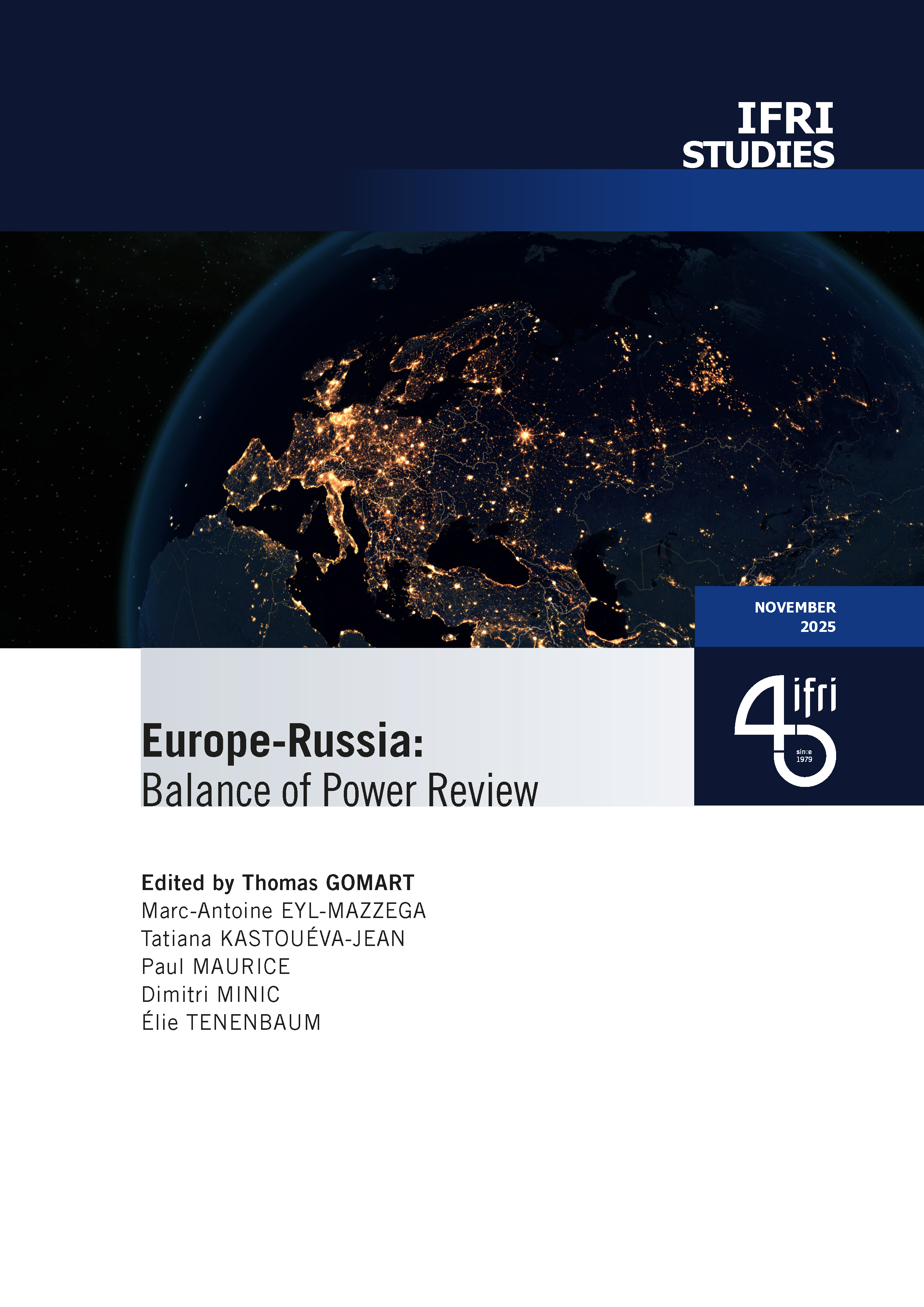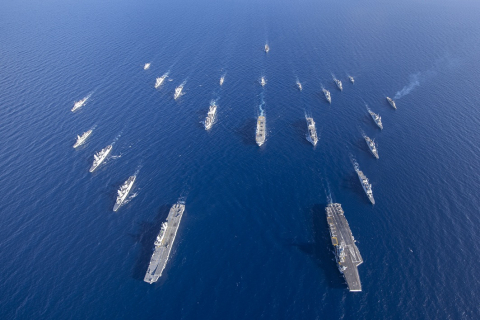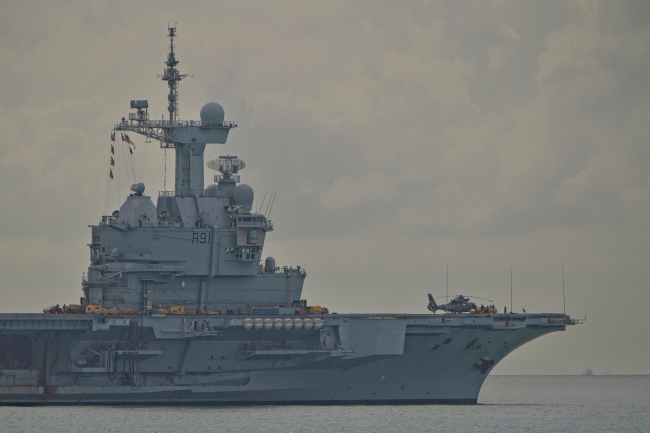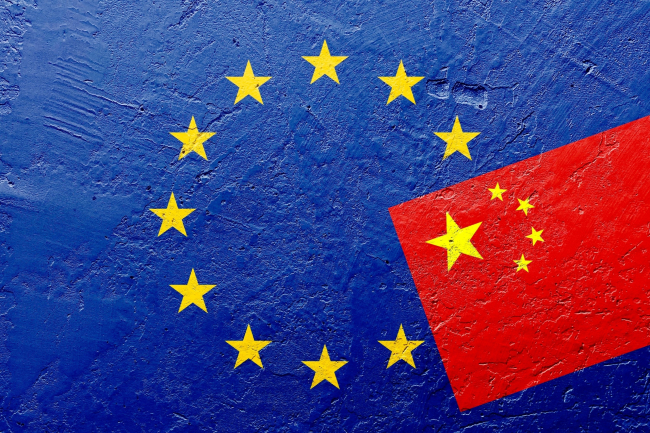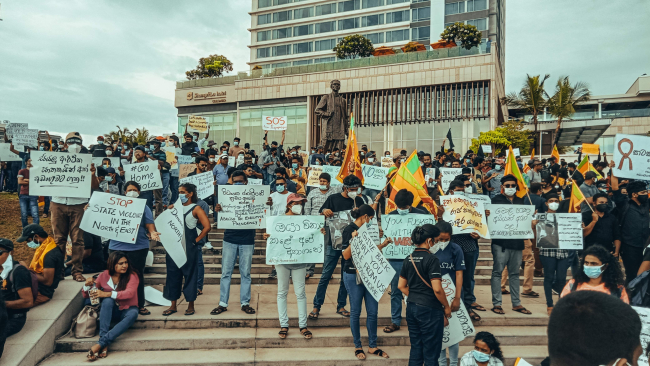The United States and France: Partners for the Pacific Islands Region?
Emmanuel Macron and Joe Biden are meeting for the first state visit under the Biden administration, which is reserved for France.

One year before, on October 29, 2021, the presidents met in Rome to repair the bilateral relations after the secretly negotiated AUKUS security partnership with Australia and the United Kingdom. The two presidents issued a joint statement in which the United States welcomed “France’s enduring role as an Indo-Pacific partner" and as "a key contributor and security provider to a free and open Indo-Pacific." They called for “robust collaboration in the Indo-Pacific, particularly given growing economic and strategic challenges there.”
Yet post-AUKUS momentum on the Indo-Pacific with the United States’ oldest ally has been limited. Indeed, each ally gets short shrift in the Indo-Pacific segments of the other’s recently released strategic documents. There is not a single mention of France or the European Union as Indo-Pacific partners in the U.S. National Security Strategy or National Defense Strategy. Meanwhile, France puts the other three Indo-Pacific Quad countries on top of its list of partners but does not mention the United States in its Strategic Defense Review.
This is a missed opportunity. The United States and France have much in common in the region. The Pacific Islands region is probably the most interesting case study in this regard.
Similarities in the Pacific Islands Region
Nowhere does the potential for “robust collaboration in the Indo-Pacific” between France and the United States apply better than in the Pacific Islands region. Thanks to their respective territories in the Pacific, they are the two Western resident powers (putting aside the tiny British Pitcairn Islands). The Pacific represents the bulk of their exclusive economic zones, which are the two largest in the world. More than one million French and around two million U.S. citizens live in the region. The United States alone has approximately 375,000 military and civilian personnel in the Indo-Pacific Command’s (INDOPACOM) area of responsibility. Its French equivalent (ALPACI) has around 3,000 permanent defense personnel under its command. Both countries also play an important role in the South Pacific Defence Ministers’ Meeting.
France and the United States also share less laudable background in the region, stained by colonization and controversial nuclear tests. The end of nuclear testing and continued negotiations on the status of respective territories helped make the two countries more generally accepted regional partners. But many Pacific Island countries (PICs) remain wary about the sudden upsurge of interest.
France and the United States therefore have many comparable interests and challenges. They have vital interests in keeping the sea lanes of communication open. They worry about increasing assertiveness, predation and interference from China. And they have to deal with questions about their roles as guarantors of the international rules-based order and multilateralism in the region.
For all these reasons, it makes good sense that the two countries decided to reengage and allocate more attention and means to the Pacific. The Biden administration recently released the first-ever U.S. Pacific Partnership Strategy for the Pacific Islands, and organized the first United States-Pacific Island Country Summit. At the end of that summit, its leaders issued a Declaration on U.S.-Pacific Partnership, accompanied by a U.S. pledge to provide $810 million in support. Washington has also launched the Partnership for the Blue Pacific (PBP), an “informal mechanism” to work with international partners involved in the region.
For its part, France held in July 2021 its fifth France-Oceania Summit, a format initiated by Jacques Chirac in 2003. The summit called for a “new momentum” and the French president hinted at France’s “reengagement in the Pacific.” More recently, Minister for Armed Forces Sébastien Lecornu announced in a speech at the last Shangri-La dialogue that France would allocate six new ocean patrol vessels and five new Falcon Maritime Surveillance Aircraft to New Caledonia and French Polynesia.
Although some Franco-American cooperation exists on the Pacific, it remains well below its potential. Both countries’ contribute to multilateral security initiatives such as the Pacific QUAD (with Australia and New Zealand) to counter illegal, unregulated, and unreported (IUU) fishing with Pacific Island partners. A French liaison officer is also assigned to U.S. Indo-Pacific Command and the allies conduct to military exercises such as RIMPAC, Marara, and Heifara Wakea. There is much room for improvement in the Pacific, but the problem lies elsewhere.
Strategic Rift
Although Paris’s tilt to the Asia-Pacific dates back to the early 2010s, the strategic vision of President Macron for the Indo-Pacific was carved out during the Trump years. From the outset, it was articulated as an alternative to the “Free and Open Indo-Pacific” concept championed by the United States and Japan. This vision was laid out in a series of speeches given in the region (at Garden Island, Nouméa in 2018, La Réunion in 2019, and French Polynesia in 2021). It differs mainly in that France refuses to be locked in a “bloc against bloc” approach, nor compelled to choose between the United States and China.
As reaffirmed during his latest trip to Southeast Asia, the French president aims to offer an alternative to great power competition. He presents France as a “balancing power” that is neither equidistant, nor aligned in the competition between the United States and China. He has been promoting the concept of “freedom of sovereignty,” which can be interpreted as the Indo-Pacific equivalent of the “strategic autonomy” concept that France has championed in Europe. This position is rather appealing for many “nonaligned countries such as India and Indonesia, as well as to some Pacific Island countries that want to avoid being pawns in a game involving major external powers.
[...]
Read the whole article on the CSIS website.

Available in:
Regions and themes
Share
Related centers and programs
Discover our other research centers and programsFind out more
Discover all our analyses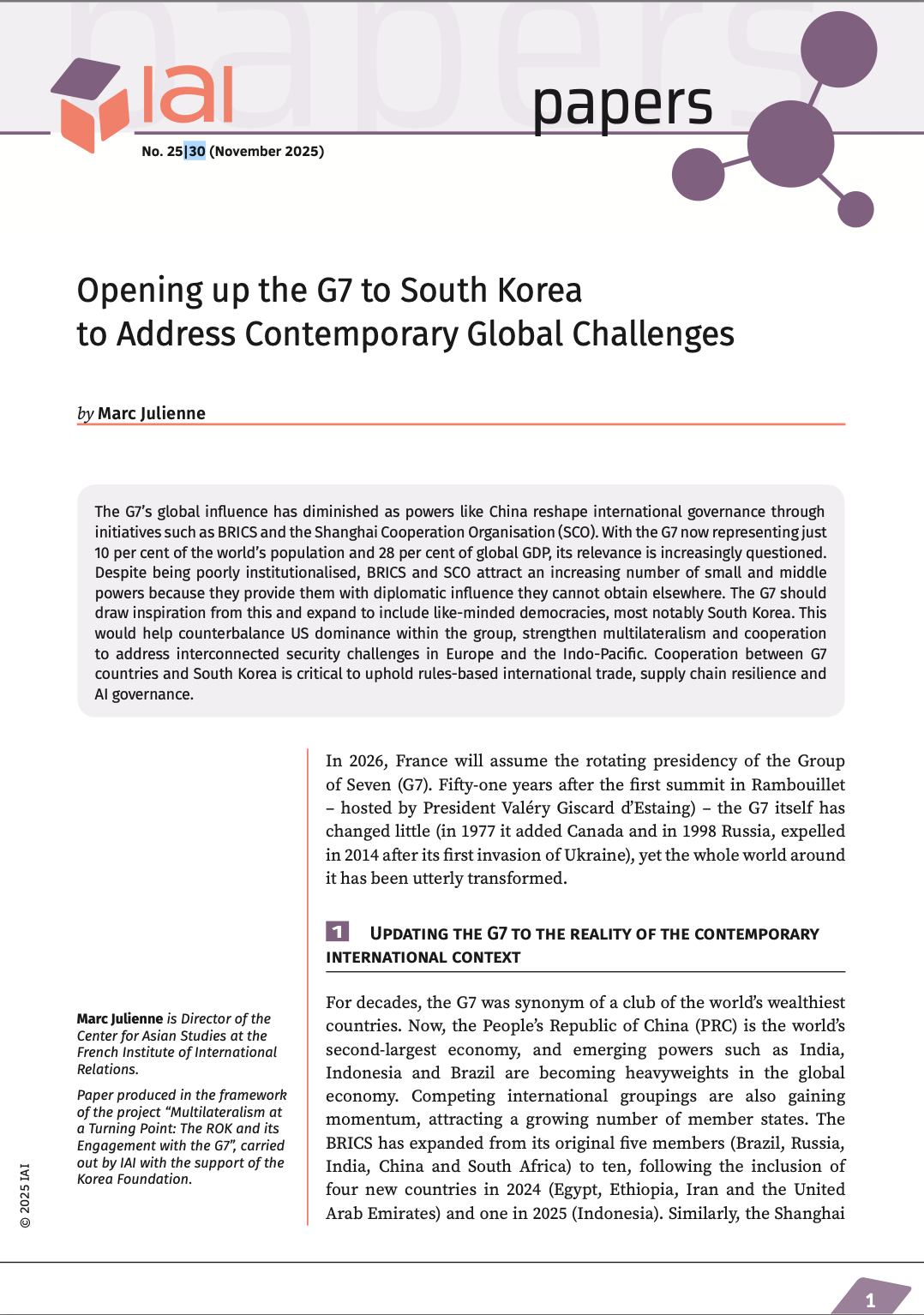
Opening up the G7 to South Korea to Address Contemporary Global Challenges
The G7’s global influence has diminished as powers like China reshape international governance through initiatives such as BRICS and the Shanghai Cooperation Organisation (SCO). With the G7 now representing just 10 per cent of the world’s population and 28 per cent of global GDP, its relevance is increasingly questioned.
Expanding SPDMM as a pivotal institution in the Pacific – A French perspective
The South Pacific Defence Ministers’ Meeting (SPDMM) is the only forum that brings together defense ministers from the wider South Pacific — including Chile, which is hosting it for the first time. This heterogeneous group of countries with varying resources, capacities, and interests — Australia, Chile, Fiji, France, New Zealand, Papua New Guinea (PNG), and Tonga — are united by their shared determination to strengthen cooperation on maritime security and humanitarian assistance and disaster relief (HADR) activities.
EU’s Derisking From China: A Daunting Task
With economic security as a major concern, the EU has recently turned to “derisking” from China. The EU strategy entails reducing critical dependencies and vulnerabilities, including in EU supply chains, and diversifying where necessary, while recognizing the importance and need to maintain open channels of communication.
Sri Lanka’s NPP Government. From System Change to Structural Compliance
In September 2024, a relative outsider to Sri Lanka’s two-party-dominated political system, Anura Kumara Dissanayake, won the presidential elections. The anti-establishment, populist movement he represented, the National People’s Power (NPP), went on to receive an overwhelming mandate in the November 2024 general elections, winning 159 seats in a 225-member parliament.


